Endangered Animals | General Knowledge for Young Learners - Class 1 PDF Download
| Table of contents |

|
| Introduction |

|
| Endangered Animals: Facts |

|
| What Causes Animals to Become Endangered? |

|
| Endangered Animals |

|
| What You Can Do to Save Endangered Animals? |

|
Introduction
Endangered animals are species where the number of animals living in the wild has been greatly reduced due to a variety of reasons, such as deforestation or changing climate. This means that they are at high risk of dying out in the near future if we don't take any steps to protect them.
Although extinction is a natural phenomenon, with between one and five species becoming extinct each year, we are now losing dozens of species every day. It is estimated that one million species (including plants) will be lost by 2050.
Endangered Animals: Facts
- A species is defined as endangered or threatened when it is suffers from damage to its habitat for recreational, or entertainment purposes, disease or predation of the species, or hazards to the continued life of the species.
- There are only 350,000 elephants left in Africa. This indicates a dramatic drop from the approximately 7.5 million African elephants that were recorded in the 1930s.
- The Red Panda is endangered because the trees they live in are cut down for wood. They are also hunted for their beautiful fur. Sometimes, they get caught in traps that are meant for other small animals.
- Humans are responsible for 99% of the endangered species.
- The Blue Whale is endangered because there are poisonous chemicals in the seas. They are sometimes hit by ships and can get injured so badly that they die. They can get caught in fishing equipment.
- Extinction is a natural process in the wild. The standard rate is about 5 species per year. However, the current extinction rate is over 12 species a day. This means that, if we continue in the same way, 30%–50% of current known species of animals will be extinct within the next 30 years.
What Causes Animals to Become Endangered?
Humans are the biggest threat to animals today for a number of reasons, including the introduction of invasive species. One example of this is the grey squirrel that was introduced to the UK from America in the 1800s, leading to a decline in red squirrel numbers. Find out more about the impact of humans on animal populations below:
- Habitat destruction: Habitats such as rainforests are being destroyed on vast scales to make space for farmland, commercial logging or human settlements. This scale of deforestation and the clearance of other habitats for agriculture means that wild animals are being confined to smaller and smaller spaces, making it more difficult to find food and raise their young. In turn, this causes wildlife populations to decline.
- Hunting and poaching: Hunting and poaching are also responsible for falling wildlife populations, as animals are killed, so people can sell their fur and horns.
- Pollution and pesticides: Pollution comes in many forms, including pollution from rubbish, air and water pollution, noise and light pollution and soil contamination. Pesticides can wash into rivers, contaminating the water and harming more than just the bugs targeted on crops.
- Global warming: Global warming is having a big effect on the habitats of lots of different animals. For example, the sea ice that polar bears rely on is disappearing. Similarly, countless animals, such as the hawksbill turtle, depend on coral reefs. But warming water is causing bleaching of the coral, putting the survival of many species at risk.
Endangered Animals
Tigers
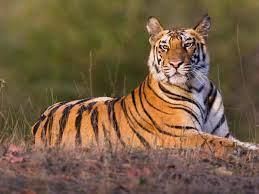
- Tigers are hunted for their skin or their body parts, which are often used in 'bogus' medicines. Sometimes they might even be hunted just for sport. Even more concerning is that one poacher's trap can kill more than one tiger.
- For example, if a mother is killed, then her cubs won't survive either, leading to the destruction of the whole family. Tigers also need space to hunt and live, but with growing human populations across their habitat, competition for space is tough.
Orangutans
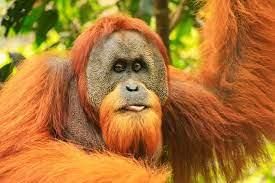
- With the destruction of rainforests comes the destruction of the orangutan's habitats.
- To make their situation even worse, they are at risk from illegal hunting, where the females are killed, so their babies can be sold illegally as pets.
Rhinoceroses
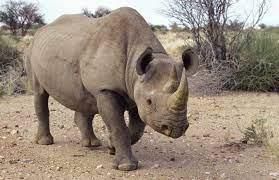
- Rhinos are hunted for their horns, which are then powdered and used in medicines in some parts of Asia.
- More than 94% of rhinos have now been wiped out. As a solution, some park rangers are cutting off rhinos' horns to stop them from being killed.
Turtles
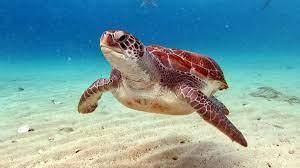
- As well as being at risk of accidental fishing, turtles are poached for their meat, shells, skin, and eggs. Both turtles and their habitats can be harmed when poisonous chemicals are dumped into the ocean, too.
- Light pollution near the shore can also cause baby turtles to become disoriented when they hatch. This causes them to wander inland rather than towards the sea, causing them to die of dehydration and at the hands of predators.
African Wild Dog
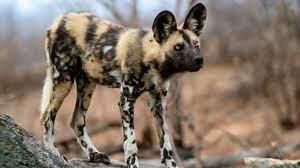
- African wild dogs live in Sub-Saharan Africa, which is located south of the Sahara Desert. They are much taller than standard breeds of domestic dogs, coming in at about 30 — 40″ tall. African wild dogs are also very thin animals, with big, round ears that give them amazing hearing and help them stay cool. Whilst you cannot pet them, like domestic dogs, they are beautiful animals with a mixture of brown, black and white fur.
- Sadly, there are less than 5000 African wild dogs in the wild, today. Their population could be as low as 3000. The main cause for the endangerment of African wild dogs is habitat loss. They are also, however, hunted by farmers, who view them as a threat to their livestock.
Amur Leopard
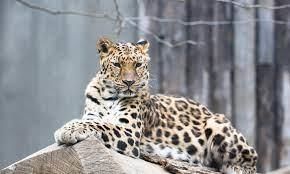
- Leopards, in general, are very endangered animals, and the Amur leopard is a particularly endangered subspecies. Amur Leopards live in Russia and certain areas of China, as it favours very cold weather.
- Amur leopards are set apart from other subspecies of leopards by their long legs, which are believed to help them walk through the snow. Their fur, which is already very thick, can grow to over 7cm in the winter to protect them from the harsh cold.
Asian Elephants
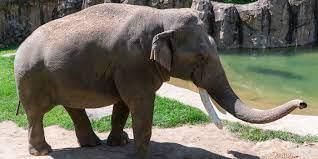
- Asian elephants are the second-biggest animals in the world, topped only by African bush elephants. Asian elephants can be distinguished by their small ears and smooth skin. They can also weigh up to 6000 kgs, with their trunks alone weighing 140 kgs.
- There used to be millions of elephants across Africa and Asia, but this is no longer the case. Now, there are only around 500,000 elephants in Africa, and 35,000 in Asia. The main driving force behind the endangerment of Asian elephants is the loss of habitat. Deforestation means that trees are being chopped down to create space for farming, leaving nowhere for elephants to live.
Axolotl
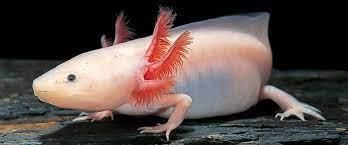
- This alien-like creature, which is also known as a Mexican salamander, is a type of amphibian. Axolotls look a lot like lizards and have smooth, moist skin and long tails. They also have external gills which grow out from both sides of their heads.
- Despite their strange appearance, axolotls are fascinating creatures! They have self-healing powers and are even capable of growing back lost limbs.
Black-footed Ferrets
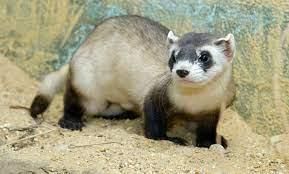
- Black-footed ferrets, who are part of the mustelid family, can be found in North America. In the 1980s, black-footed ferrets were thought to be extinct in the wild. However, they have been reintroduced since then and there are now estimated to be 1000 black-footed ferrets in the wild.
- Black-footed ferrets can be identified by their long, slim bodies and short legs. They have tan-coloured fur with black markings on their feet, legs, tail, and eyes. These animals spend most of their time underground, which makes them very hard to observe.
Blue Whales

- Blue whales are the biggest creatures to have ever lived on earth. This means that they’re even bigger than the dinosaurs! Moreover, blue whales can weigh up to 200 tons, which is a whopping 181,437kg. Despite their size, blue whales only eat tiny crustaceans called krill. An adult blue whale can eat up to 40 million krill a day.
- Blue whales can be found in all oceans of the world, but they tend to migrate to different areas depending on the time of year. For the majority of the year, they live in deep waters near the Arctic and Antarctic regions, as this area contains a large amount of krill. Then, during mating season, they travel closer to the Equator in search of a warmer climate, so they can give birth in warm waters.
Chimpanzees
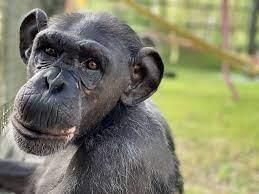
- Despite their appearance, chimpanzees are actually not monkeys. In fact, they are part of the ‘great ape’ family. Chimpanzees are actually our nearest living relatives and share around 98% of our genes.
- Adult chimpanzees are around 3 to 5 feet tall, weighing anywhere between 25 and 50 kgs, and can be found in the forests of Central Africa.
Galápagos Penguins

- Galápagos penguins can be found on the Galápagos Islands, and are the only penguins living north of the equator. Galápagos penguins are the second-smallest penguins on earth, second only to the aptly named ‘Little Penguins’.
- The biggest threats to the Galápagos penguins are pollution and climate change. During the events of El Niño* between 1982-83 and 1997-98, the population of the Galápagos penguins declined by 60%.
Gold Lion Tamarins
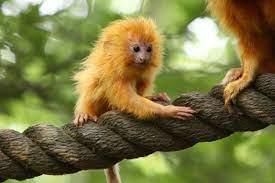
- The golden lion tamarin, also known as the golden marmoset, is a species of New World monkey. Golden lion tamarins are small creatures with vibrant red fur on its body and completely hairless feet.
- A fully grown golden lion tamarin is around 19 – 22 cm long and has a tail longer than its body, which is around 26 – 33 cm in length. What’s more, golden lion tamarins only weigh around 400 to 822 g, with very little difference between the male and female of the species.
Whale Shark
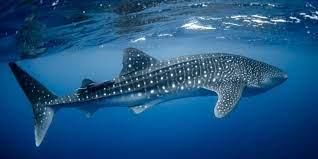
- The whale shark, whose scientific name is Rhincodon typus, is a species of fish found in various tropical oceans across the world. The whale shark is famous for being the largest species of fish in the world, as it is a massive 18.8 metres in length.
- Something thing that sets the whale shark apart from the rest of the shark species is the fact that it is a filter feeder. Out of the more than 500 species of sharks in the world, only 3 of them are filter feeders: the whale shark, the basking shark, and the megamouth shark.
- Because of its feeding style, the whale shark tends to live off plankton and other small organisms that float in the water, which is surprising given its size.
Whooping Crane
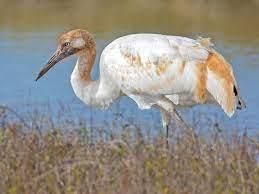
- The whooping crane is a type of bird found in North America. You can’t miss this bird, with its long, elegant neck and legs to match, coupled with its huge white plumage. The whooping crane is actually the tallest bird in North America, and one of the heaviest. In addition to its imposing physical appearance, this bird has an extremely loud whooping call, which is how it got its name.
- Currently, there are around 250 adult whooping cranes in the wild. However, this number could be much higher as there have been many recent breeding successes with the species. The majority of these whooping cranes spend their summers in Wood Buffalo National Park in Canada, moving on to Texas, USA for the winter.
What You Can Do to Save Endangered Animals?
Although most of us won't be able to have a global impact, there are a number of things we can do to have a positive impact on wildlife in our area.
- Find out which species are endangered in your area. The first step is awareness. If you know what species are endangered, you can act in a way that won't put these animals at risk.
- Make sure your home isn't a hazard to wildlife. Secure bins and reduce your water usage, so there is more water available to local wildlife.
- Plant plants. This will provide food for the wildlife in your area.
- Avoid using toxic herbicides or pesticides in your garden. There are often alternatives for a fabulous lawn.
- Support zoos and wildlife parks. Although this sounds odd as zoos keep animals in captivity, they are often involved in lots of conservation initiatives.
|
52 videos|107 docs|40 tests
|















